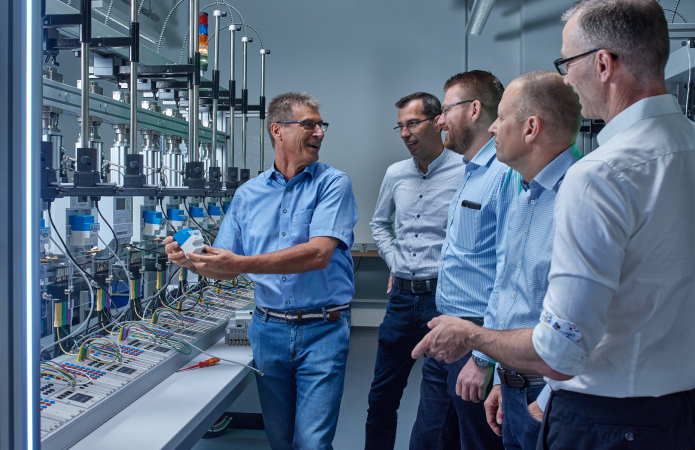The smart metering system is a key component of the energy transition in the grid. However, smart metering systems must not only be introduced for household customers, but also for industry, commerce and large generation plants. Around three quarters of the energy consumed in Germany is recorded at these metering points using recording load profile metering (RLM). At the same time, however, the number of RLM metering points is very low at around one percent of the total of 53 million metering points in Germany.
The proportion of RLM metering points equipped with a smart metering system will increase significantly in the coming years. In order to drive forward development in this segment, five companies from the sector have joined forces: E.ON, Netze BW GmbH, Robotron Datenbank-Software GmbH, Power Plus Communications AG and Landis+Gyr GmbH have tested a solution in which RLM meters are connected via smart meter gateways while taking into account the specific technical and economic conditions of this market segment. The partners have demonstrated that this solution is marketable, offers a high level of security and is available in a timely manner.
According to the Act on the Restart of the Digitization of the Energy Transition (GNDEW), at least 20 percent of RLM measuring points must be equipped by the end of 2028. That's not a lot of time given the effort required for specification, development and testing. This is why the joint testing of the solution to create synergy effects was a key driving force for the five project partners.
By linking an RLM meter with a smart meter gateway (SMGW), they have implemented an intelligent, recording load profile measurement system "iRLMSys". More precisely, an RLM meter from Landis+Gyr was connected to the Robotron backend system via the CLS interface of the PPC smart meter gateway. This solution not only fulfills all specific RLM use cases, but also provides the measured values for subsequent billing with high availability (i.e. even if the communication connection to the meter is temporarily interrupted, for example) thanks to meter reading progression in the meter. The latter is of particular importance due to the large amounts of energy to be measured, especially for balancing. For this reason, the measurement data is also stored in the RLM meter. In addition, local interfaces of the meter can be used as a high-performance interface for optimization tasks in the industry and enable customers to automate processes efficiently. The solution therefore meets the requirements of customers in this market segment, which differ fundamentally from those of normal household customers in terms of the requirements described above.
The RLM solution implemented by the partners is implemented and available in a test environment by using the existing secure CLS communication channel. This means that more complex RLM measuring points can benefit from the cyber-secure iMSys infrastructure on an ad hoc basis.
The tested solution corresponds to the approach that is also being pursued by the standardization committees. It will be further optimized during the specification work. Interoperability and standardization as well as short-term availability are very important to all partners. Taking into account the requirements outlined, the partners are prepared to further explore the solution space with all relevant stakeholders and continue the constructive dialogue.


